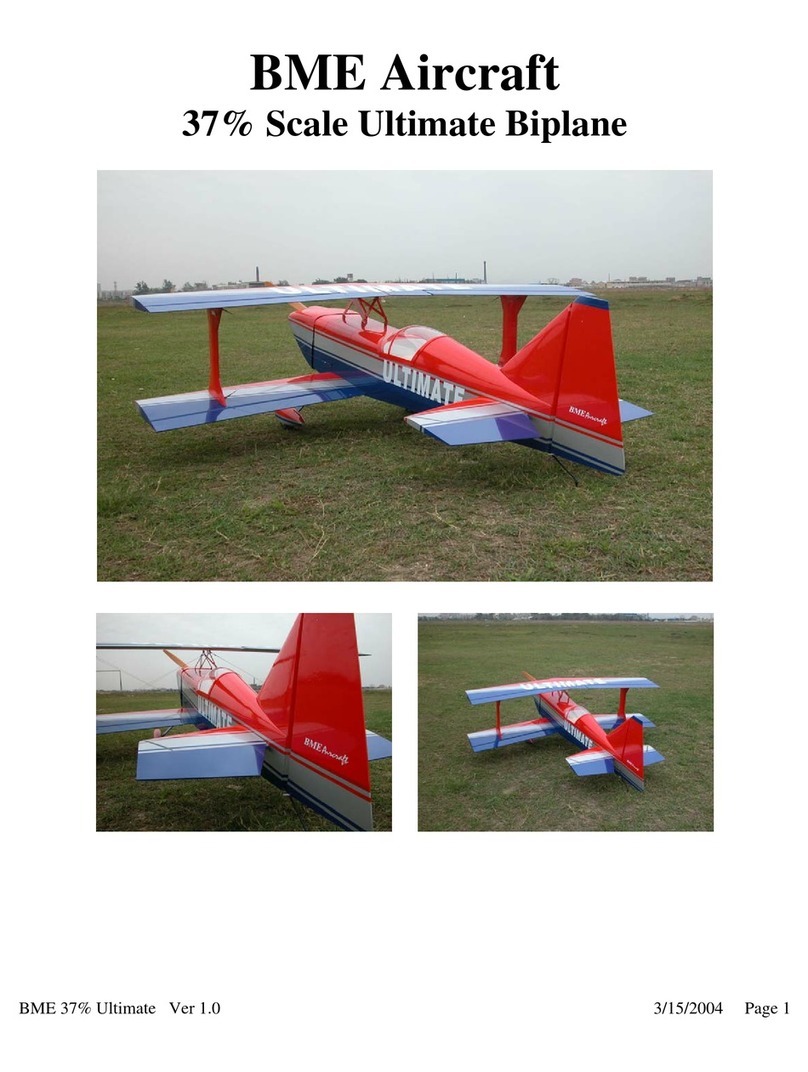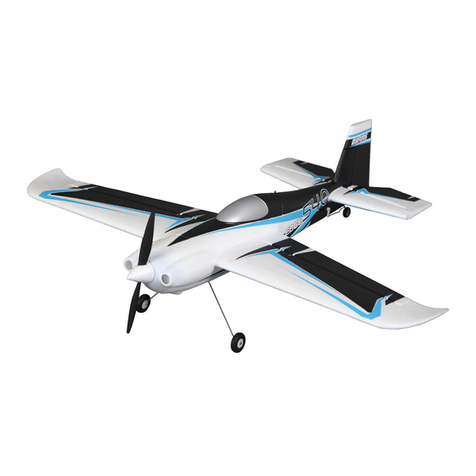1 pair of wing strut 1x canopy
1 pair of main wheel / wheel pants 1x hardware pack
1 set of tail wheel assembly 1 set of nylon sticker (3x ORACLE
1x landing gear and block 2x BME Aircraft)
1 set (4x) center cabane
2. Iron all film cover area---
Before you start assembling, Iron all film covered area to make sure
that the film stick on firmly.
3. Cut out film covered area
Cut out the film that covers the opening like servo mount, hinges etc.
II. Start assembling
A. Fuselage—
1. Center cabane
a.Find 4 pcs of aluminum
center cabane from the bags.
There should be two longer
ones and two shorter ones.
Then find the pre-cut 4 slots on
top of the fuse front. Insert 4
cabanes into 4 slots. The
shorter ones goes into the front
slot, longer ones into the rear.
Find 1/2” 4-40 screws from the
hardware pack with the washers
and spring washers to secure
the cabane in place. Thread
lock is required on these
screws.
b. Use two Y-harness, one on
each side of the rear cabane for
aileron connection.
2
























